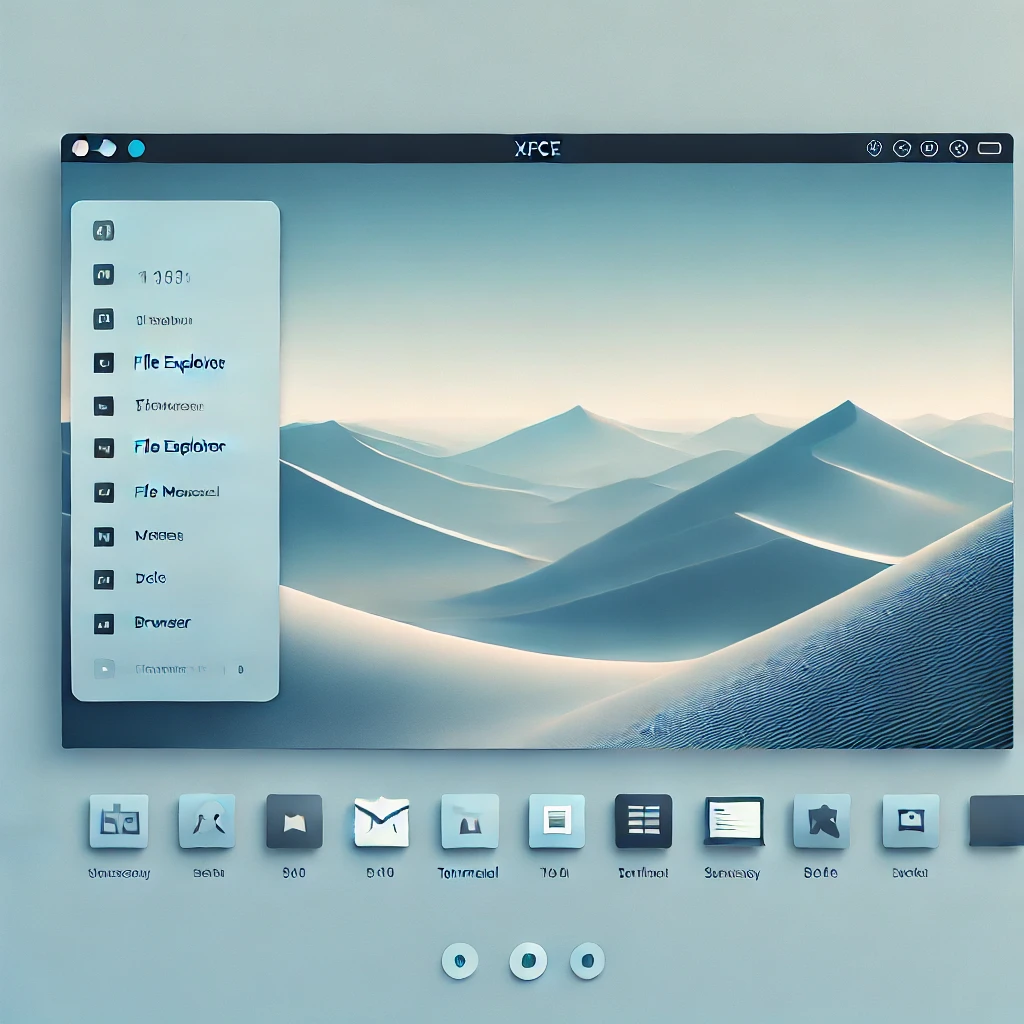XFCE Desktop Environment: The Perfect Performance And Functionality

Categories:
4 minute read
Introduction
The XFCE Desktop Environment has long been a favorite among Linux users seeking a perfect balance between performance and functionality. This lightweight yet feature-rich desktop environment has earned its reputation for being both resource-efficient and user-friendly. In this comprehensive guide, we’ll explore everything you need to know about the XFCE Desktop Environment, from its history to practical usage tips.
What is XFCE?
XFCE (XForms Common Environment) is a free and open-source desktop environment for Unix-like operating systems. First released in 1996, it has evolved into a modern, sleek, and efficient desktop environment while maintaining its commitment to speed and low system requirements.
Key Features
Lightweight: Minimal system resource usage
Modular: Components can be installed separately
Customizable: Extensive theming and configuration options
Stable: Regular updates focused on reliability
User-friendly: Intuitive interface similar to traditional desktop layouts
System Requirements
One of XFCE’s main advantages is its modest hardware requirements:
Processor: 1 GHz or faster
RAM: 512 MB minimum (1 GB recommended)
Storage: 2 GB minimum for installation
Graphics: Basic graphics card with 64 MB memory These requirements make XFCE an excellent choice for:
Older computers
Low-power devices
Systems where resource efficiency is crucial
Core Components
XFWM Window Manager
The XFWM window manager is the heart of XFCE, providing:
Window decorations
Workspace management
Compositing effects
Keyboard shortcuts
Window snapping Thunar File Manager
Thunar is XFCE’s default file manager, offering:
Fast performance
Custom actions
Bulk file renaming
Network browsing
Thumbnail support
Plugin system Panel System
XFCE’s panel system is highly configurable:
Multiple panels support
Various panel plugins
Custom positioning
Autohide options
Different sizes and orientations
Customization Options
Theme Customization
XFCE supports extensive theming capabilities:
Window Decorations
GTK themes
Window borders
Icon themes
Custom colors
Desktop Settings
Wallpaper management
Multiple desktop support
Custom desktop icons
Menu customization
Panel Appearance
Background settings
Transparency options
Custom widgets
Plugin arrangement Keyboard and Mouse
Configure input devices to your preferences:
Custom keyboard shortcuts
Mouse sensitivity
Touchpad settings
Gesture support
Popular Applications
XFCE comes with several default applications:
Mousepad: Simple text editor
Parole: Media player
Ristretto: Image viewer
Task Manager: System monitor
Screenshot Tool: Screen capture utility
Performance Optimization
Memory Usage
XFCE is known for its efficient memory management:
Typical RAM usage: 300-500 MB
Minimal background processes
Efficient process handling
Quick application launching Tips for Better Performance
Disable Unnecessary Services
Remove unused plugins
Disable compositing if not needed
Limit startup applications
Optimize Visual Effects
Reduce animation duration
Minimize transparency
Use lighter themes
Installation Guide
On Popular Linux Distributions
Ubuntu/Debian:
sudo apt update
sudo apt install xfce4 xfce4-goodies
Fedora:
sudo dnf group install "Xfce Desktop"```
**Arch Linux:**
```bash
sudo pacman -S xfce4 xfce4-goodies
Troubleshooting Common Issues
Display Problems
Screen Tearing
Enable compositing
Adjust refresh rate
Update graphics drivers
Resolution Issues
Check display settings
Update xorg configuration
Verify driver compatibility Audio Configuration
Sound Issues
Check PulseAudio settings
Verify mixer controls
Update audio drivers
Tips and Tricks
Keyboard Shortcuts
Essential shortcuts for productivity:
Alt + F10: Maximize windowAlt + F4: Close windowAlt + F7: Move windowCtrl + Alt + D: Show desktopWindows + E: Open file manager Panel Management
Tips for efficient panel usage:
Right-click for panel preferences
Middle-click for the window list
Drag and drop panel items
Use autohide for more screen space
Community and Support
Getting Help
Official Resources
XFCE documentation
Community forums
Mailing lists
IRC channels
Community Support
Stack Exchange
Reddit communities
Local Linux user groups
Future Development
XFCE continues to evolve while maintaining its core principles:
Regular stability updates
Performance improvements
New feature additions
GTK compatibility updates
Conclusion
XFCE remains one of the most reliable and efficient desktop environments in the Linux ecosystem. Its combination of performance, functionality, and customization options makes it an excellent choice for both newcomers and experienced users. Whether you’re reviving an old computer or seeking a lightweight alternative to heavier desktop environments, XFCE delivers a robust and enjoyable computing experience.
For users seeking a stable, efficient, and customizable desktop environment, XFCE provides an excellent solution that continues to improve while staying true to its lightweight roots. Its active community and ongoing development ensure it will remain viable for years.
You can also find remarkable 20 Linux Desktop Environments with brief descriptions in our blog post.
Feedback
Was this page helpful?
Glad to hear it! Please tell us how we can improve.
Sorry to hear that. Please tell us how we can improve.